Lifestyle - Interview

Interview with James Stanford, Contemporary Artist and Photographer
Lifestyle - Interview
by Beren Dere
There are many kinds of art, and their common side is the creativity of the artists. The works of art which combine different artistic theories are the most mysterious ones. Kaleidoscopic art doesn't make much sense when you first hear it, but as soon as you see the works, you dive deeper. James Stanford combined photography, digital artwork, painting and drawing in his artworks. He photographs an object, a building, a sign, or a poster, then turns it into a completely different artwork. With the kaleidoscopic photomontages technique, he can produce an infinite number of different artworks from a single image, which proves how difficult it is to choose the best one. It is possible to find the reflections of his experience and spiritual perspective that he has acquired over the years in each work he creates. There is symmetry in the center of everything. I talked with James Stanford about his career and his recent exhibition in Las Vegas.
James, before talking about your exhibition in Las Vegas, I would like to learn more about you. How did you discover your passion for art?
I was always enthralled by visual stimuli, and I enjoyed quiet activities much to my parents' delight. I was a late in life child. My parents were much older than all of my friend’s parents, and they appreciated quiet. My oldest brother, Jerry was 18 years older than me and was studying art in college, when I was born. When he came home for the holidays, I would beg him to draw for me. Jerry could draw anything that he could imagine. His first love was cartooning, and he was inspired by the style of Milton Caniff, who created the syndicated comic strips, Terry and the Pirates and Steve Canyon. Caniff had a very representational style, that my brother emulated. It was truly magical to see Jerry draw convincing figures without a model or any reference besides his own imagination. Jerry’s magic got me started. I was hooked at a very early age.
When Jerry accepted a commission in the U.S. Navy, it didn’t surprise me when he went away to war in Korea. Like his favorite Sunday cartoon, Terry and the Pirates, he too spent time chasing pirates in the South China Sea. He left all of his academic drawings at home, neatly rolled up like scrolls for me to worship. I couldn’t stop looking at them. I loved to study the way he cross-hatched, the quality of his line, the way he handled different materials. I developed a distinctly different style than he did, because I had different interests, and I grew up in a different era, but I think that artistic talent can be genetic. It was also a bit of karma; it was no accident that Jerry (the artist), was my older brother.
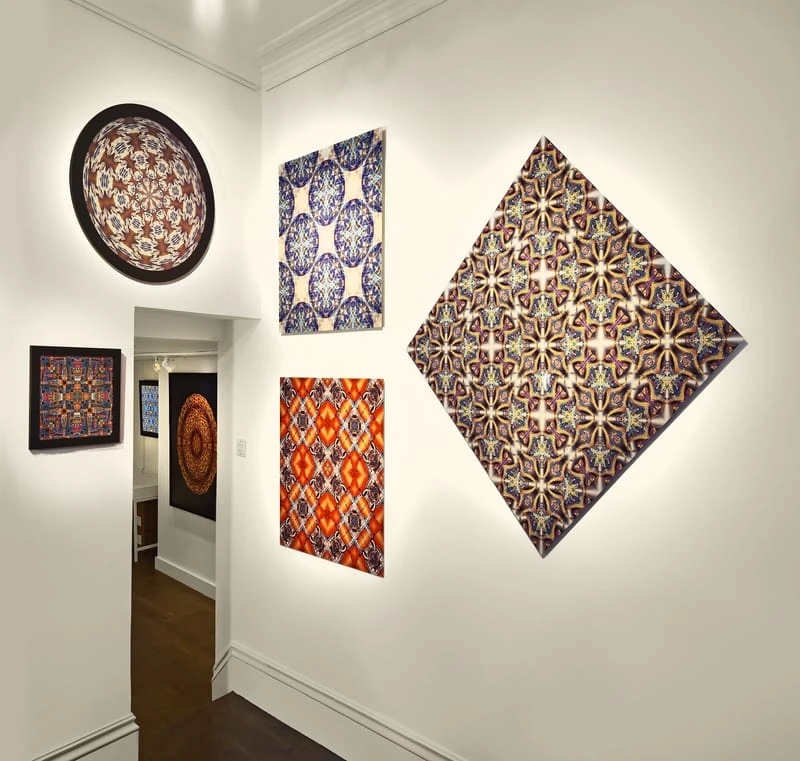
James Stanford
When did you look through a kaleidoscope for the first time? Do you remember your feelings?
I don’t know about the first time, but I recall being blown away that mirrors and colored rocks could create these amazing patterns. I have always marveled at pareidolia, the many things that one can visualize when looking at a cloud or a tree or anything made up of random shapes, the human mind and imagination can’t help but perceive recognizable images, especially faces, in random or accidental arrangements of shapes. We are talking about human perception. Human perception is what my art is all about. After all, we are each the co-creators our universe. Our apparatus of perception allows us to perceive certain wavelengths, while it excludes others. We are indeed all creators of our own reality, only we just don’t recognize it. I can’t help but recognize and celebrate the act of creation. Because all humans possess a common natural creativity, so therefore, I expect others to experience what I myself experience, the viewer becomes co-creator, especially when they engage with one of my lenticular pieces. Their movement and their perception is a critical part of the experience.
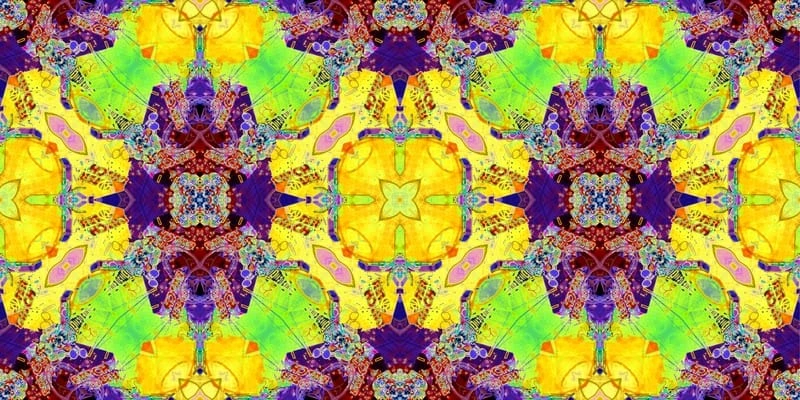
James Stanford - Lucky Lady
You combine photography, digital illustration, painting, and drawing in your artworks. How did you specialize in different branches of art?
It occurred to me in high school that most of the modern artists that came before me had academic backgrounds. They almost without exception, learned how to draw the figure and still life. Many of them learned how to paint representationally. Only after learning the rules did they try and break the rules. I took this as my model.
Perhaps because of my exposure to the artistic ability of my brother, I seemed to know instinctually, that my first need, was to learn how to draw what was in front of me. I didn’t want to rely on the stored set of symbols, that all children use to represent reality. I felt that these symbols were cheap copies of what was actually there in front of me. It was hard work that allowed me to break free of my left brain. Blind contour drawing, gesture, proportion, shade, and light, all require hours of practice to perceive. Drawing representationally was necessary for me to develop an artistic eye. I’m glad I placed such importance on learning how to draw. It was because of my devotion to life drawing that I was first offered an art scholarship.
The painting was just a natural consequence of drawing. You learn how to draw with paint. Not overloading my brush was a major discovery. Color theory was and is another study. The fact that color is not isolable is the greatest discovery. Simultaneous contrast still fascinates me. Teaching Color Composition was an endless learning experience for me, that stimulated many doorways to understanding composition.
I specialized in alternative painting materials and techniques when I taught at the university level. Materials and techniques like egg tempera, distemper, hot wax encaustic, and air brush were part of my repertoire. I studied fresco painting with Stephen Pope Dimitroff and Lucienne Bloch, who worked with Diego Rivera and Frida Kahlo when they were in the United States. I know enough about these techniques to teach others, yet I ended up becoming a digital artist. Digital painting is just another alternative technique.
Digital tools allow me to paint and draw and distort. Photoshop is just another set of tools. This set of tools requires no turpentine, or paint thinner. Nothing about the process itself pollutes our drinking water.
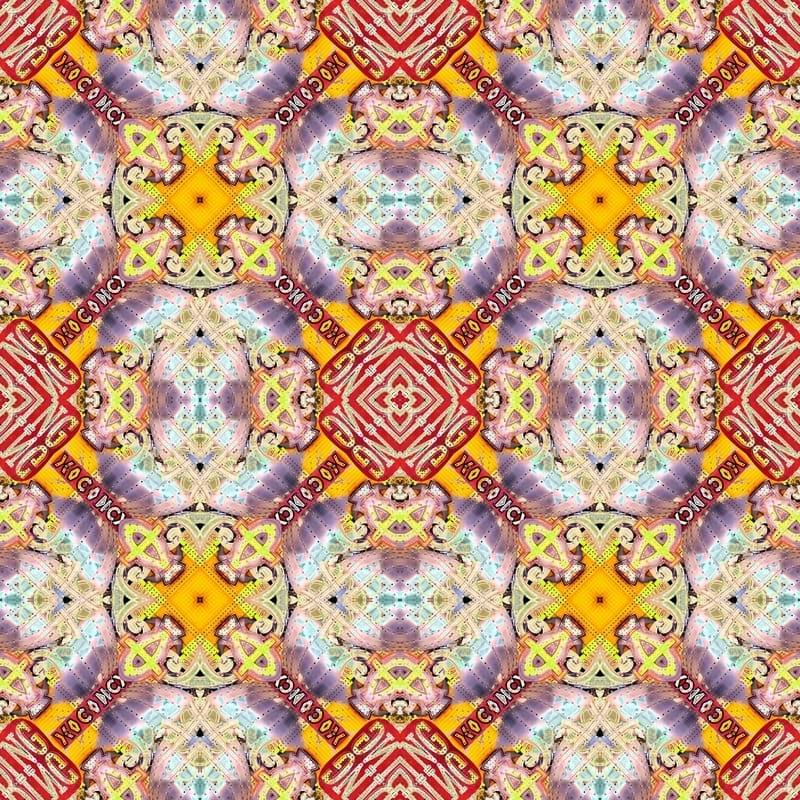
James Stanford - Aladdin Dingly Dan
What happened at the Prado Museum, Madrid in 1968? What has changed in your life?
In December of 1968, I traveled to Spain on a university-sponsored tour. I abandoned the schedule and visited the Prado Museum instead. Every day that I spent in Madrid, I went to the Prado to explore. I had never been to a museum ever before in my life, and I was 20 years old. What a great jewel of a museum it was for virgin eyes! Previously, I had seen only lantern slides, photographs, and reproductions, since Las Vegas had no museums at the time. I was blown away by the work of Goya, Velazquez, Hieronymus Bosch, Pieter Bruegel the Elder, Albrecht Durer, and so many other great masters, but when I saw Rogier Van Der Weyden’s, The Descent From The Cross (1443), I got so involved studying the minute detail of the folds of the robes, that I fainted dead away. My head hit the marble floor which gave me a bit of a concussion. I awoke with both a horrible headache, and a flash grasp of some of the painting techniques that Van Der Weyden had used. Years later I discovered that this fainting experience was known as Stendhal Syndrome. And I was amazed to find out that this reaction to great art is not as rare as it may seem. To me, at the time, it was a religious experience, but I don’t mean the Christian aspect. It was an artistic epiphany. I discovered after my fall that my religion is the religion of Art.
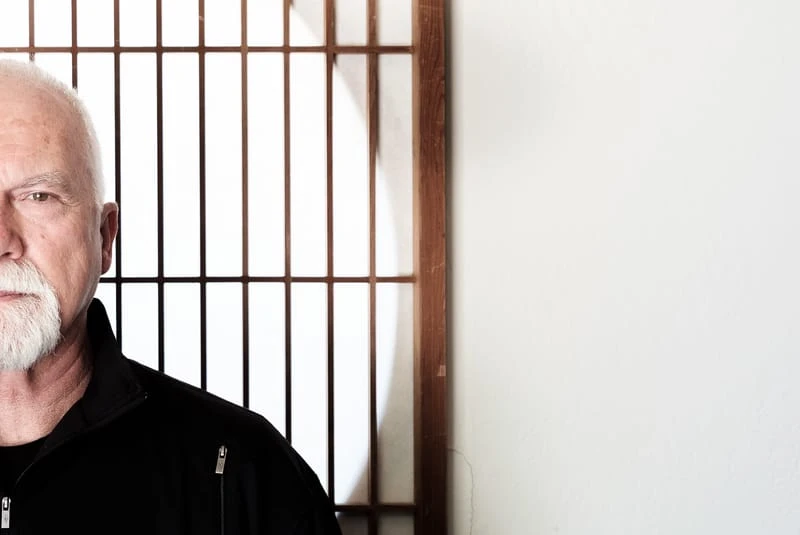
James Stanford
How would you describe your artistic approach?
I really got into the habit of making art in order to quiet my mind. I found that if I became involved in drawing, painting, or working on the computer I was entering into a meditative practice. The therapeutic aspect of making art was the first thing that attracted me to create things. I know many critics would humbug the therapeutic quality of drawing and painting, but for me, it was an elixir. The mind-calming aspect is more than just feeling good. It is meditation. The mind can chatter away, but eventually shuts up. Time disappears. The self seems to fade away into something greater and more inclusive than our regular discursive thinking. Beyond that, a sense of equanimity, there is the joy of creating things.
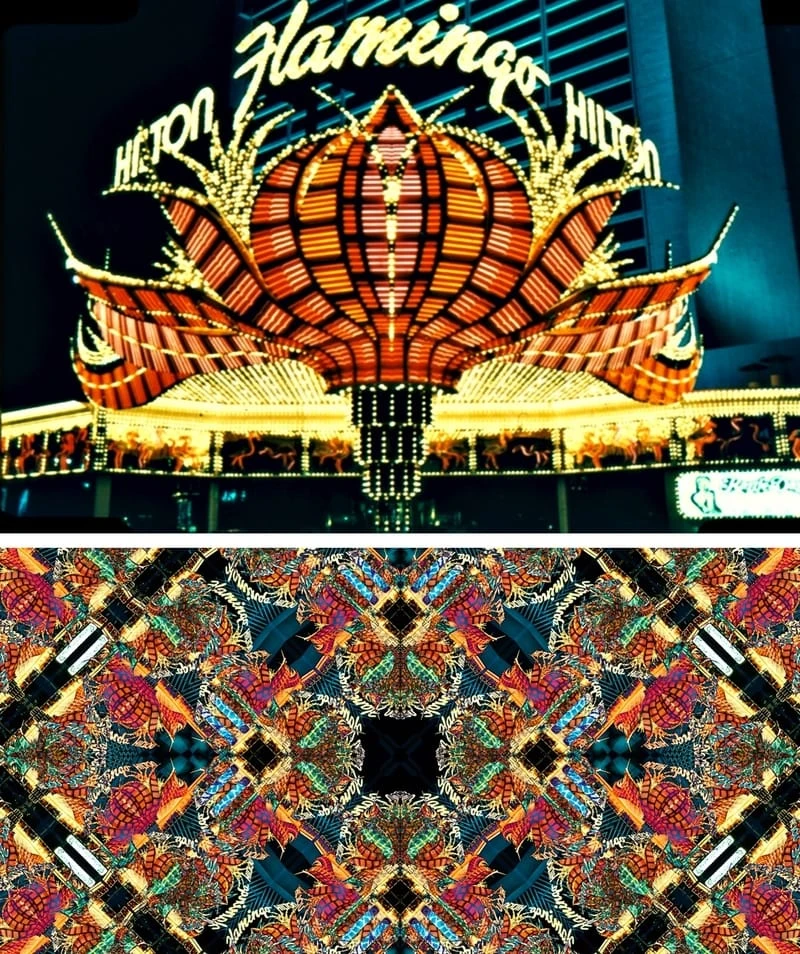
James Stanford - Flamingo Hilton and original photograph
How did you come up with the idea of creating kaleidoscopic photomontages? What inspired you?
I came to Kaleidoscopic imagery through my practice of Zen Buddhism. I call these symmetrical images, Mandalas. To me, they are objects of meditation. In a more formal compositional way, I was challenging the traditional belief that that somehow symmetry is less interesting than asymmetry. The common wisdom was that symmetry is boring because it is resolved. The left side of the axis is the same as the right side, this meant it is somehow less interesting. Great emphasis was placed on using approximate symmetry. The claim was that the minor variations found in each side of the axis made the composition more alive. My feeling has always been that symmetry, asymmetry and approximate symmetry all hold interest and should be used appropriately.
Something about all of this fear of symmetry was just a cover. Symmetry was difficult to achieve by hand. It is a struggle to achieve perfect symmetry without the help of mechanical tools. Projection, grid, graphite, all of these tricks helped somewhat, but no matter how clever the artist, the act of duplicating both sides of the axis is rather slavish. However, with the advent of the computer and software like Photoshop, a world of symmetry was readily achievable. Now the artist can explore the world of infinitely repeatable patterns. And, guess what? Many of these patterns are interesting to the human eye. This type of image is very meditative, and people are drawn to its perfection.
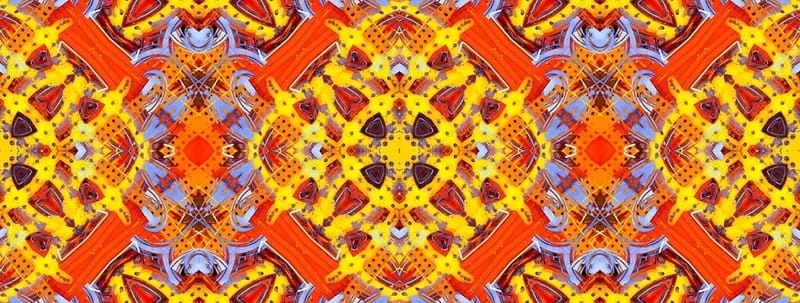
James Stanford - Indra's Jewels
What was the secret of Indra’s Jewels' success?
Perhaps the reason for Indra’s Jewels acclaim is that it combines Zen Buddhism with Las Vegas neon signage. Here is found a seeming contradiction. Las Vegas is thought to be a realm of Samsara, (desire mind). Therefore, Nirvana is not to be found there. This to me is a false dichotomy. Part of the message that I hoped to impart is that Las Vegas is as much Nirvana as it is Samsara. The tension found in displaying supposed opposites on the same picture plane is that these opposites always live together on opposite poles of a single unit. I call this the concept of the Unity of Polarity.
Light and dark, happy and sad, right and wrong, all of these opposites reside on different sides of the same pole. Each unit has heads or tails, residing on opposite poles of the same tension. It would appear that we cannot know one without the other. These opposites inform each other. We know each in degrees. It is this understanding that creates an artistic tension in my series Indra’s Jewels. My use of Las Vegas iconography in the form of a meditative mandala creates a novel view of a complex truth. I believe that great beauty comes alive because of this tension.
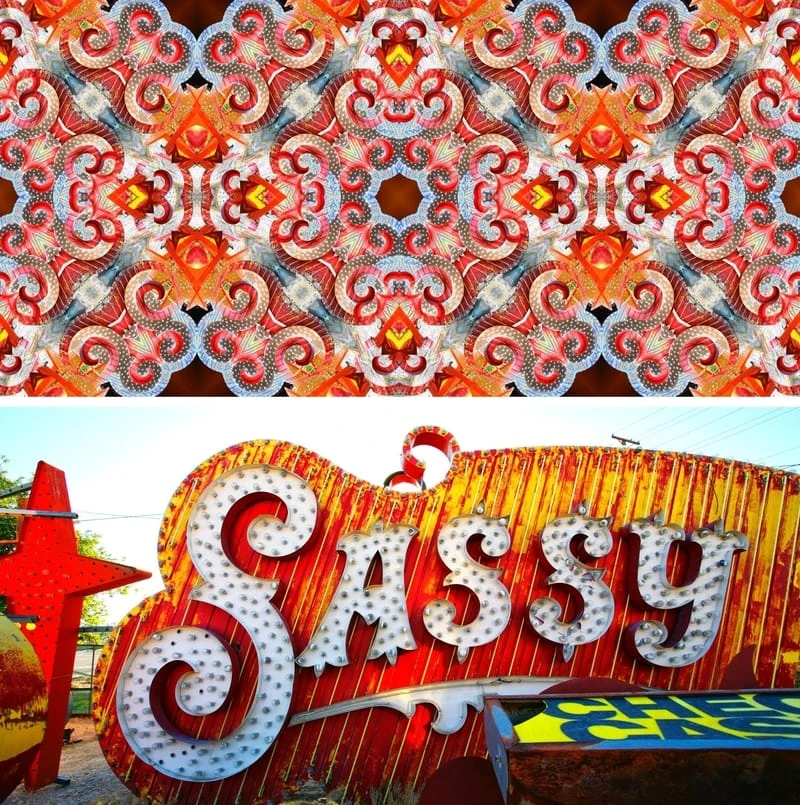
James Stanford - Skrolls and original photograph
Your recent exhibition in Las Vegas, opened on February 1 at Soho Lofts. Could you tell us about the concept?
The pop-up exhibit at Soho Lofts is called Portals. The two pieces that will be on display on Las Vegas Blvd., the Las Vegas Strip, are set in windows. They are backlit 2 flip lenticular pieces that are brightly illuminated. As a car or pedestrian passes by, they flip and transform and shimmer. These pieces, Recombo/Old Trop and So Fabrish/Old Trop were the keystones of an exhibition originally shown in London at 99 Kensington Church Street during the 25th anniversary of Asian Art in London in 2017. These are two of the key pieces from my exhibition entitled, Shimmering Zen, which is also the title of a 264-page book of the same name, which I launched at the London Library during the exhibit. There are 150 full-color images printed with a custom ink formula in Verona, Italy. Each image is true to the color of my actual prints. I’ve never seen so much color on a page. Shimmering Zen can be found on Amazon.com, Barnes & Noble, and many independent book stores in North America, the UK, Ireland, and Europe.
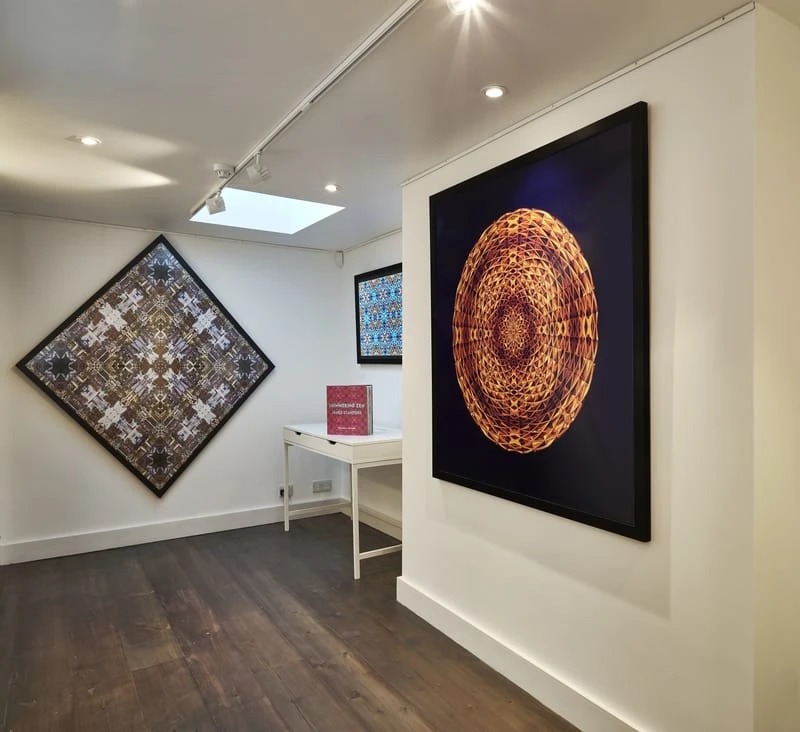
James Stanford
How many different works can we see?
The recent Shimmering Zen exhibition at The Sahara West Library had 46 pieces on display. Shimmering Zen, the book, has over 150 images. The Indra’s Jewels series numbers in the thousands.
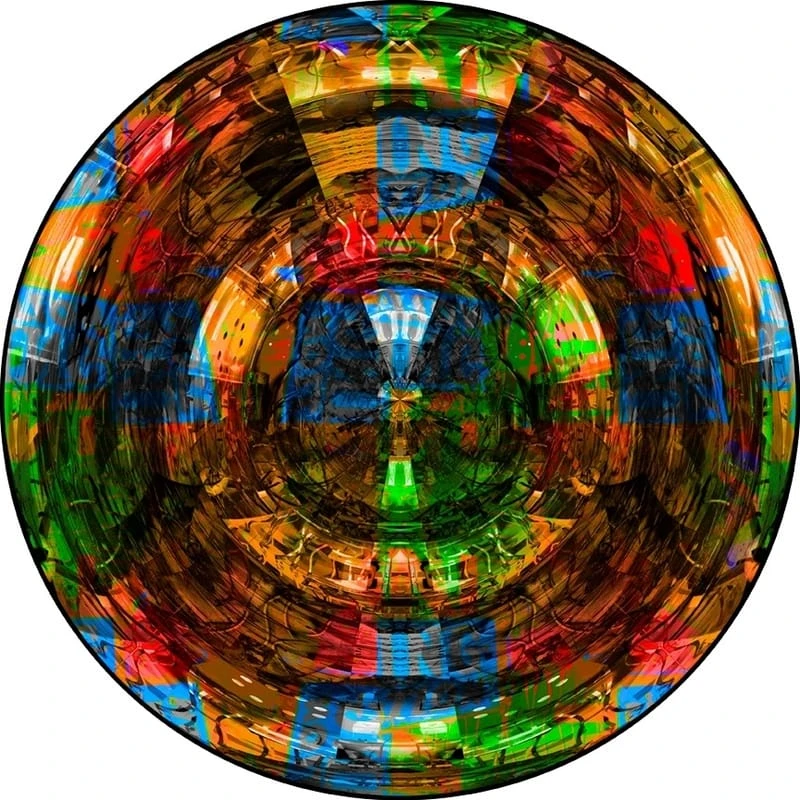
James Stanford - Portals
Do you have any favorite one? Why?
My favorite pieces are my most recent works, Portals. These are large round backlit lenticular pieces, 53” in diameter. These works are created using the latest technology. They are generally 2 flip lenticulars that use approximate symmetry. The lighting is programmable, so the portals can be adjusted to suit their environment. The light can be warmed, cooled and the lighting can be cycled.
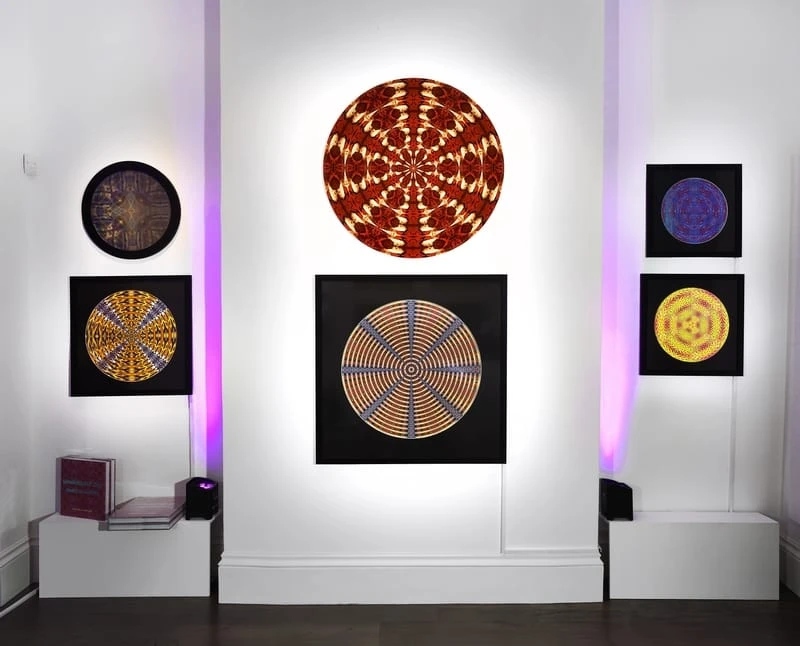
James Stanford
You inspired from Las Vegas, you are exhibiting your artworks in Las Vegas. What do you enjoy most about Las Vegas?
Las Vegas has always been a matrix for me. I was born and raised in this amazing valley in the middle of the Mojave Desert. My parents moved to what was a small resort town in 1936, my father was hired as a head football coach for the Las Vegas High School Wildcats, and he taught mathematics. Mom was an English teacher. Both of them were well-respected educators, who had a school named after them, Stanford Elementary. My wife is a native. My son was born and raised here, it is a great home base. People may have lots of ideas about what Las Vegas is or isn’t. And, they are welcome to believe whatever they want about it. My Las Vegas is like no one else’s Las Vegas. I love my home and my gallery which is a compound with a portion of an ancient Mesquite Bosque. I find Las Vegas to be an excellent place to work, and an incredible place to sell my art. Existing and new collectors are always inspired by the location as it is so unique. It is easy for them to see my influences as it relates to my art.
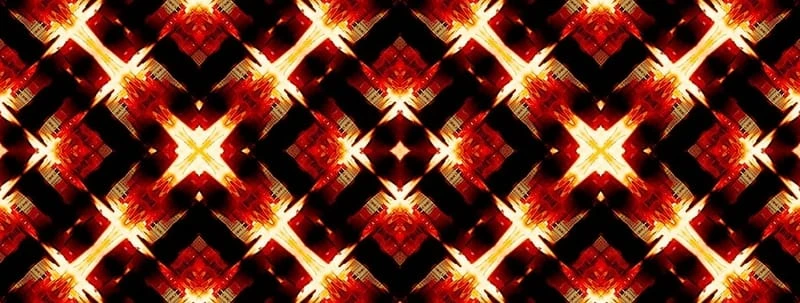
James Stanford - Caesar's Palace
What is next for you?
I continue to make new work and explore new technologies. My collectors are always asking what is new. I am always delighted to share with them what is in the works and this is how I typically create custom pieces that are site specific.
What do you think about social media? How can our readers follow you?
I am a big fan of Instagram, and I post a lot of my artwork on my @smallworkspress account.
Where can collectors find your work to purchase?
I am represented by several galleries in other cities who have many of my works, and as I am always producing, I have new pieces at my private gallery to share. I would suggest people visit my websites, www.JamesStanfordArt.com and www.shimmeringzen.com to discover more.
Thank you James for your time.
For more information, please click here to visit the website of James Stanford
This interview was conducted in a Question-and-Answer format. The answers were checked for grammar and punctuation and published without any additional editing. Tuesday, April 16, 2019. All photos are the property of their respective owners.